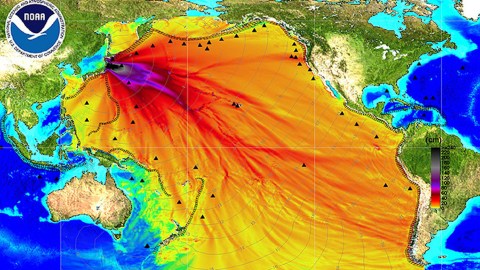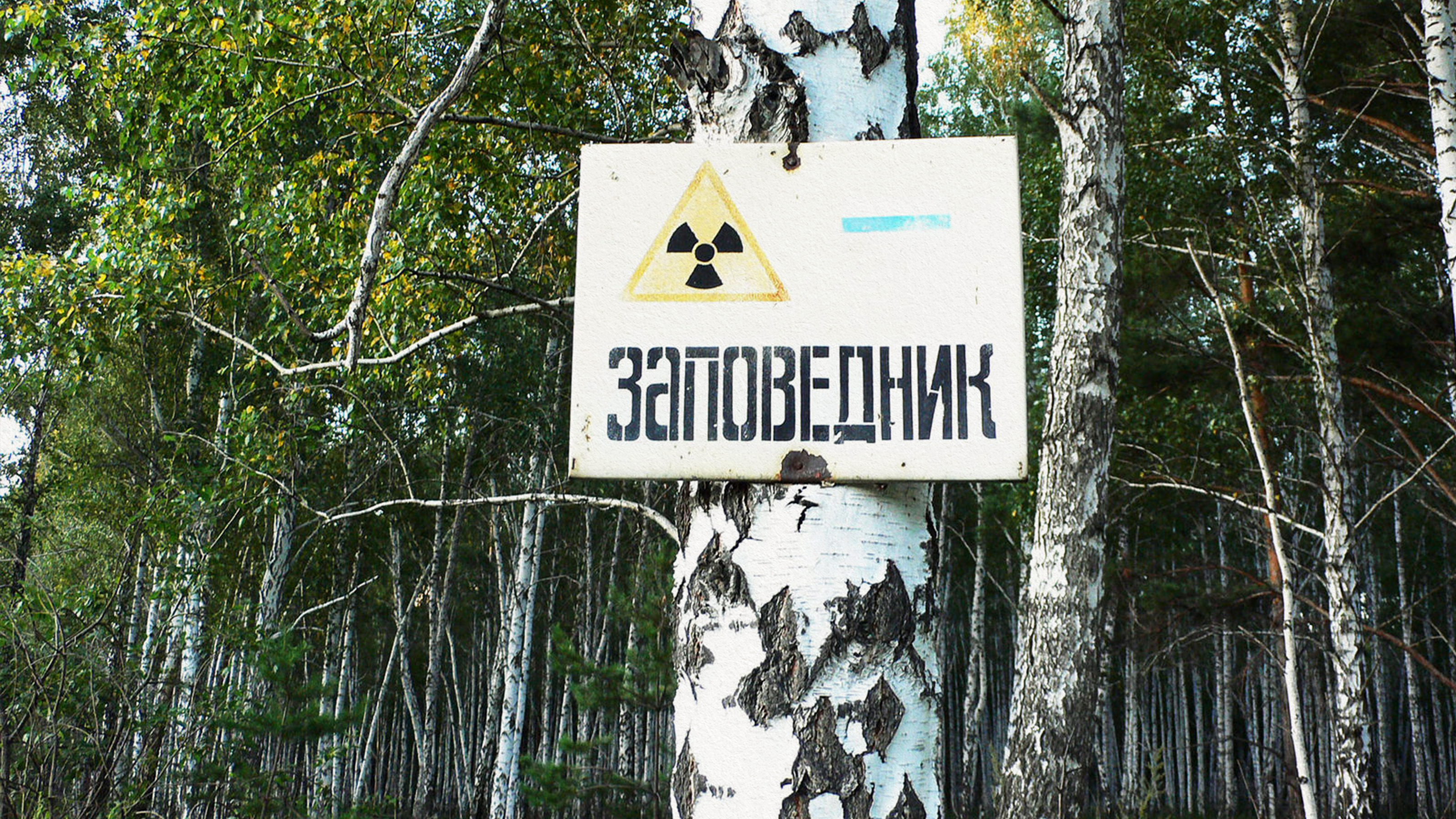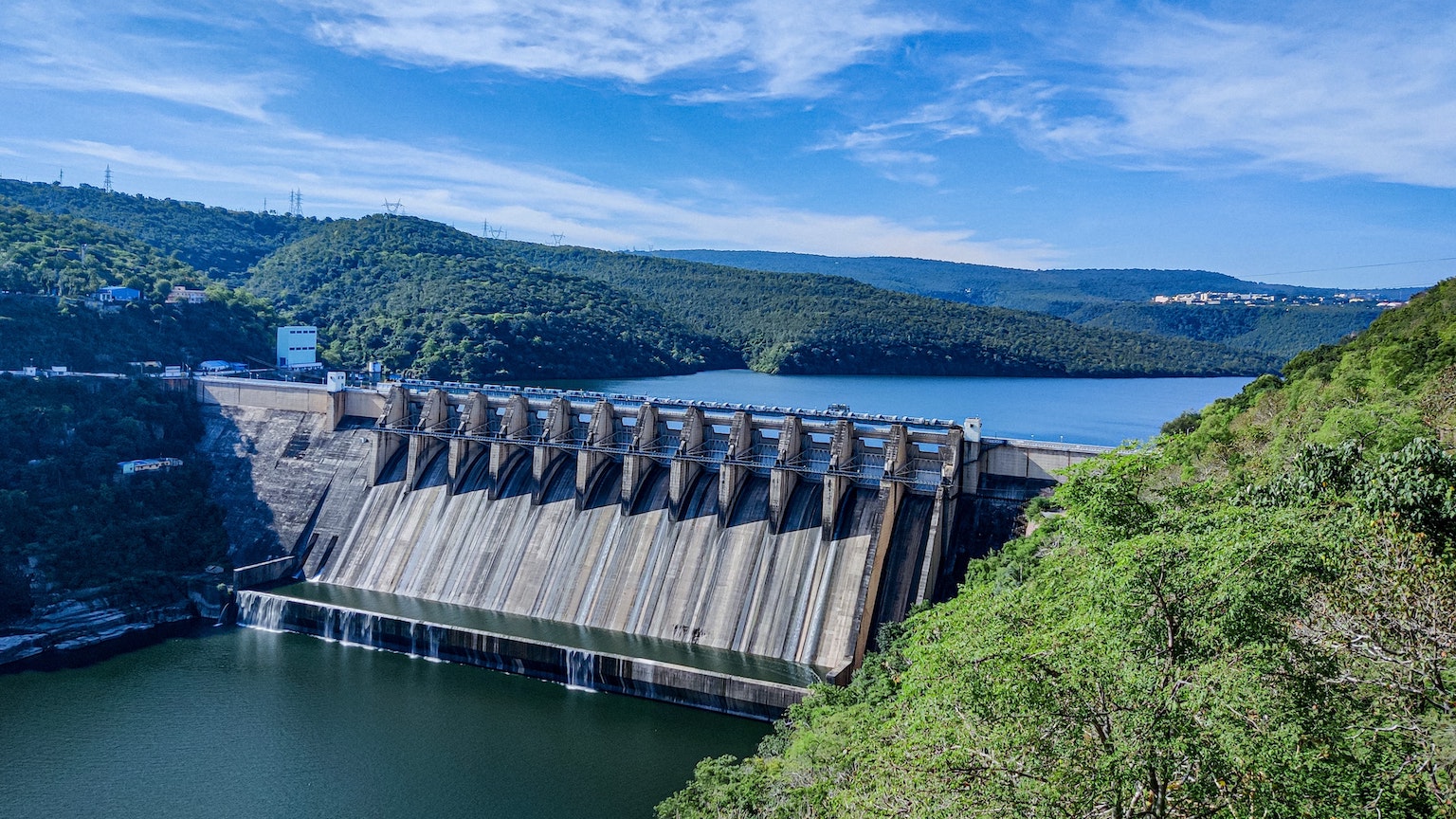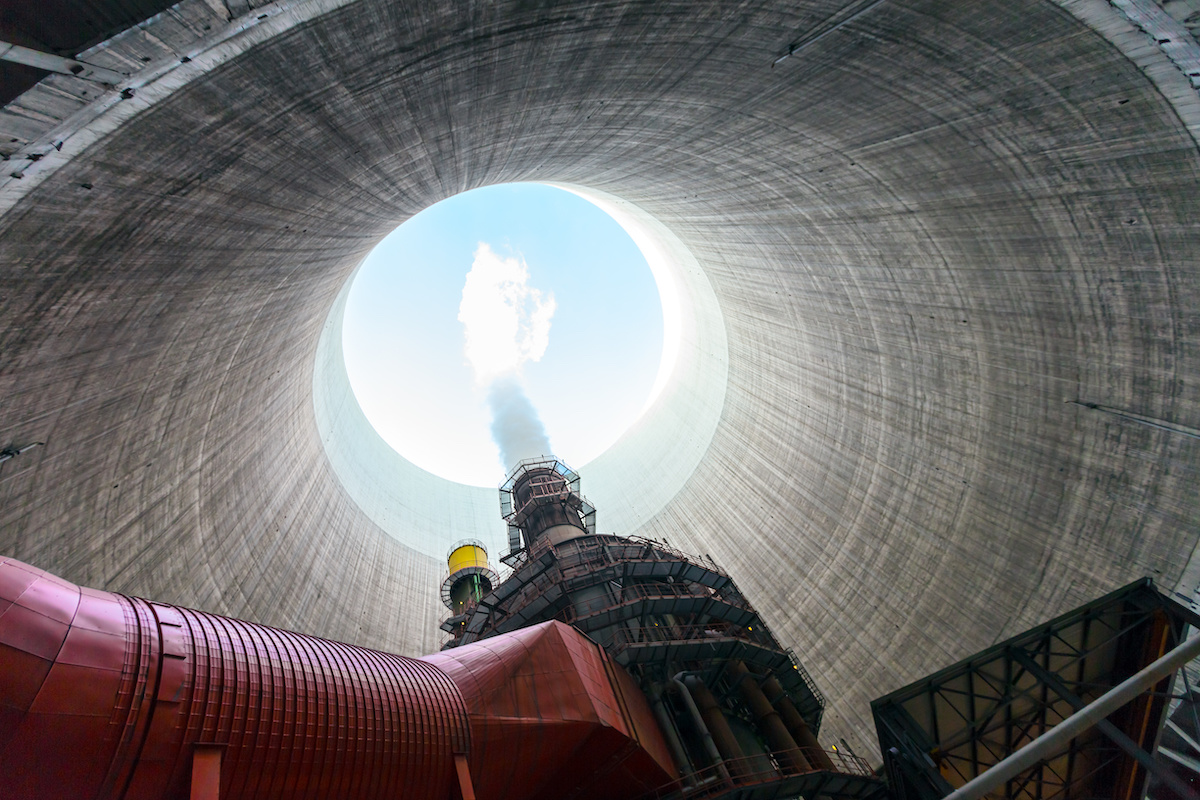Take hope: This Fukushima disaster map is a fake

Image: NOAA
- The pace and scale of environmental degradation can induce despair and inaction.
- This map of radioactive pollution of the Pacific after Fukushima adds to the damning evidence.
- Fortunately, it’s a fake. Which means there’s room for hope—and action.
We have about 12 years left to save the world. The IPCC report making that dire prediction was published earlier this month. Immediately, normal life around the world ground to a halt, while literally everybody everywhere tried to figure out how to help prevent the apocalypse.
Just kidding. The report caused precious little alarm and precipitated none of the large-scale actions that are needed to alter the course of events.

Hurricane Florence seen from space.
Photo: Wikimedia Commons
Apocalyptic overload
As the latest installment in climatological apocalyptica—a genre so dystopian that some still insist it should be classified as fiction rather than fact—the report merely added to the long list of dismal dispatches from the front line of our losing war with the future. A sample of previous, similar bad tidings:
- Hurricane Florence, which struck the East Coast in September, was 50 miles wider and produced 50% more rain than it would have without climate change. Increasingly violent storms will accelerate coastal erosion, increase the damage inflicted on coastal cities, and speed up the need to permanently evacuate coastal populations further inland.
- 2018 is on course to be the fourth-hottest year on record. The only years hotter were the three previous ones. In fact, 17 of the 18 hottest years on record have occurred since 2001. As average temperature rises continue to exceed predictions, harvests will suffer, electricity grids will fail and the number of climate refugees will explode. Increasingly deadly heat waves and wildfires look set to become the ‘new normal’.
- The equivalent of the farts of 6,000 dairy cows—that’s how much methane is released every day by Esieh Lake in northern Alaska. That’s enough to set the air above it on fire if you light a match. Scientists fear methane released by melting permafrost could create a feedback loop that will dramatically accelerate the rising of global average temperatures.
- The natural world seems no longer able to absorb the onslaught of humanity, whether through pollution, climate change or outright killing. Over the last 40 years, the global population of wild animals was reduced by nearly 60%. Germany lost more than three quarters of its insects in less than three decades. One adult elephant is killed by poachers every 15 minutes.

The so-called Holy Fire at Elsinore Lake in California, September 2018.
The frog in the pot
Humanity is the proverbial frog in the pot. Had the water been this hot to start with, we’d have jumped out straightaway. But since it’s heating up gradually, we’ll boil to death before we save ourselves.
And by now, the challenge seems so monumental that few see the point in doing something. That feeling was succinctly put by SNL’s Michael Che on a recent Weekend Update:
“I just keep asking myself: Why don’t I care about this? I mean, don’t get me wrong, I 100% believe in climate change. Yet I’m willing to do absolutely nothing about it.”
“We’re all going to lose the planet. We should be sad, right? This whole episode should be like a telethon or something. But it’s not. I think it’s because they keep telling us we’re going to lose everything. And nobody cares about everything.”
“People only care about some things. Like, if Fox News reported that in 2030 climate change is going to take away all the flags and Confederate statues, there’d be recycling bins outside of every Cracker Barrel and Dick’s Sporting Goods.”
A flippant point, but the grain of truth is that because of its size and pace, the process of environmental degradation seems hopelessly irreversible. How much easier and more comfortable to turn away from incurable despair and ignore the impending end of the world.

The NOAA map as it appears on some alarmist websites. Note the absence of a map legend.
NOAA
Earthquake, tsunami… and worse?
That’s what this map reminded me of. The Fukushima nuclear accident was a thoroughly depressing coda to the devastating earthquake and tsunami that hit Japan on 11 March 2011. So much so that we don’t like to be reminded of it.
Even if, or precisely because, leakage of radioactive material has polluted the Pacific Ocean, all the way down to Antarctica. As this map suggests, we’ve lost the greatest body of water to radioactive pollution—a loss too great to contemplate.
The map surfaced in 2013, when Japan’s Nuclear Regulatory Authority (NRA) warned that highly radioactive water from the destroyed nuclear plant at Fukushima was seeping into the Pacific Ocean, creating an emergency that operator Tepco seemed unable to contain.
Color-coded to reflect various levels of radiation, the map shows radioactivity from Fukushima leaking into the ocean, contaminating the furthest corners of the Pacific; a poisonous purple flame projects eastward from Japan’s Pacific coast, fanning out into radiant red, ohmygod orange and worrisome shades of yellow and green.
Australia’s Barrier Reef seems to be doing a good job of keeping the worst contamination away from that country’s shores. The Sea of Cortez, between the Baja California peninsula and the Mexican mainland, is still blue. But the contaminated water has touched all other shores lapped by the Pacific, from Alaska all the way down to Chile and the Antarctic.

Full map, with legend specifying the nature of the data: wave amplitudes from the tsunami.
NOAA
A certified hoax
The map suggests that the world’s largest ocean has been lost to radiation and should now be approached with as much suspicion as the exclusion zone around Chernobyl.
Except that that’s not what this map shows. It’s a Snopes-certified hoax. And therein lies this map’s redeeming power. Rather than having been unspeakably catastrophic, Fukushima is not the omerta-inducing disaster you might think it is.
The map, developed by the National Oceanographic and Atmospheric Administration (NOAA), does relate to the devastation of March 2011. But it plots tsunami wave height, not radiation leakage levels. Check the date on the map: 2011, the year of the tsunami itself. Not 2013, when Japan’s NRA launched its warning about the leakage.
Fukushima is not ‘over’. But the problem is on a different scale than the one suggested by this map, and other alarmist misrepresentations that we’re sometimes too eager to believe.

Nuclear plant at Grafenrheinfeld in Germany.
Photo: Wikimedia Commons
Silver linings
As dark clouds go, Fukushima is fairly manageable. It even has a sliver lining or two.
Fukushima is the only other nuclear disaster next to Chernobyl to get a Level 7 classification on the International Nuclear Event Scale. Yet estimates of radioactivity released at Fukushima range from just 10-40% compared to Chernobyl. The highly contaminated zone was 10-12% the size of the zone in Chernobyl.
- Only one death has been linked to short-term radiation overexposure. The WHO found that radiation levels of evacuees were so low that health effects were likely to be non-detectable. Worst-case scenario for newborns in the worst-affected area was a 1% increase in lifetime cancer risk. Estimates for long-term cancer mortality due to the accident range from a few hundred up to 1,800—about the same number killed directly by the earthquake and tsunami, spread out over many decades.
- The accident has boosted the research into and development of sustainable, low-carbon and nuclear-free alternative energy generation. Immediately following the disaster, the IAEA halved its estimate of additional nuclear energy capacity scheduled for 2035. Germany decided to accelerate its phase-out of nuclear power to 2022. Other countries, however, are going ahead with their nuclear plans, including the UK, Russia, India and China. The Chinese want to triple their nuclear power output by 2020, and again by 2030. By 2050, China aims to have up to 500 gigawatts of nuclear capacity, 100 times more than it has now.
- But Fukushima has also led to safer nuclear energy. New technology installed in nuclear power stations around the world would have prevented the hydrogen explosions which occurred at Fukushima. Improved filter systems allow for emergency depressurization of the core with a minimal release of radioactivity. Disaster-secure power backups and building layouts have become standard across the industry.
- By April 2014, radioactive tuna was found swimming off the U.S. West Coast. But the difference was less than the level of radioactivity found naturally in a banana. None of the fish caught on the American shore of the Pacific has had radiation levels outside of food safety limits. For fish caught off Japan, that hasn’t been the case since April 2015. Even though radioactive leakage still occurs, the Pacific Ocean is vast enough to dilute the radiation to harmless, non-detectable levels. In February of this year, Japan resumed the export of fish caught just off Fukushima.

George Monbiot, environmentalist and nuclear convert.
Photo: Wikimedia Commons
A nuclear convert
Few have gone quite so far as George Monbiot, the environmental activist and writer, who wrote in 2011: “As a result of the disaster at Fukushima, I am no longer nuclear-neutral. I now support the technology.”
“A crappy old plant with inadequate safety features was hit by a monster earthquake and a vast tsunami. The electricity supply failed, knocking out the cooling system. The reactors began to explode and melt down. The disaster exposed a familiar legacy of poor design and corner-cutting. Yet, as far as we know, no one has yet received a lethal dose of radiation (1).”
“I’m not proposing complacency here. I am proposing perspective. Like most greens, I favor a major expansion of renewables. But the energy source to which most economies will revert if they shut down their nuclear plants is not wood, water, wind or sun, but fossil fuel.”
“Atomic energy has just been subjected to one of the harshest of possible tests, and the impact on people and the planet has been small. The crisis at Fukushima has converted me to the cause of nuclear power.”
Controversial? Certainly. Enlightened or misguided? That remains to be seen. But Monbiot shows—as does this map—that even world-class disasters can inspire optimism rather than despair.
Strange Maps #943
Got a strange map? Let me know atstrangemaps@gmail.com.
(1) Obviously written before news of the casualty mentioned above was publicized.





